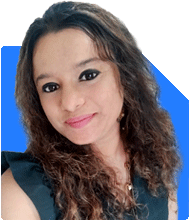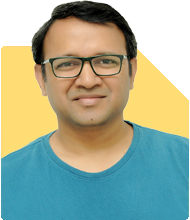Ramalingam Kalirajan |10894 Answers |Ask -Follow
Mutual Funds, Financial Planning Expert - Answered on Jun 13, 2024
He has an MBA in finance from the University of Madras and is a certified financial planner.
He is the director and chief financial planner at Holistic Investment, a Chennai-based firm that offers financial planning and wealth management advice.... more

Hello Sir, My monthly income is 1.1 lakh, i ahve a personal loan of 17 lakhs for which my EMI is 37k for next 60 months, 34k is my rent and i left out with 39k, i have two kids and school fees is 1.9 lakh per annum. I am in very crital situation for money saving. Presently i have 11 lakhs in my PF and good amount of gold accumalated. Please show me right path so that i can have a good savings.
Understanding Your Financial Situation
Your monthly income is Rs 1.1 lakh, but you face considerable expenses including a personal loan EMI of Rs 37,000 and rent of Rs 34,000. After these deductions, you are left with Rs 39,000. Additionally, you have annual school fees of Rs 1.9 lakh for your two children, which translates to about Rs 15,833 per month.
Analyzing Your Expenses
Let's break down your monthly expenses:
Personal Loan EMI: Rs 37,000
Rent: Rs 34,000
School Fees: Rs 15,833 (approximately Rs 1.9 lakh annually divided by 12 months)
Remaining Income: Rs 23,167 (Rs 39,000 - Rs 15,833)
This leaves you with Rs 23,167 for other expenses, savings, and investments. It's crucial to optimize this amount to ensure a good savings strategy.
Prioritizing Your Expenses
To achieve a good savings plan, prioritize your expenses. Essential expenses should be covered first, followed by discretionary spending. Here's a prioritization strategy:
1. Essential Expenses:
Personal Loan EMI
Rent
School Fees
Groceries and Utilities
2. Discretionary Spending:
Entertainment
Dining Out
Hobbies
Building an Emergency Fund
An emergency fund is crucial for unexpected expenses. Aim to save at least six months' worth of expenses. This fund will provide a safety net during financial emergencies.
Managing Debt Efficiently
Your personal loan EMI is a significant monthly expense. Consider these strategies to manage your debt efficiently:
1. Loan Restructuring:
Contact your bank to discuss loan restructuring options. Extending the loan tenure could reduce your monthly EMI, easing your cash flow.
2. Prepayment Strategy:
Whenever you receive any additional income or bonus, consider making prepayments on your personal loan. This will reduce the principal amount, leading to lower interest payments over time.
3. Consolidation:
If you have multiple loans, consider consolidating them into a single loan with a lower interest rate. This can simplify repayments and reduce overall interest costs.
Optimizing Your Expenses
Review your monthly expenses to identify areas where you can cut costs:
1. Rent:
Consider moving to a more affordable rental property or negotiating with your landlord for a rent reduction.
2. Utilities and Groceries:
Look for ways to reduce utility bills and grocery expenses. Simple changes like energy-saving practices and buying in bulk can make a difference.
3. Discretionary Spending:
Limit discretionary spending on entertainment, dining out, and hobbies. Allocate a fixed amount for these expenses and stick to it.
Strategic Investments for Growth
With Rs 23,167 remaining each month, it's crucial to invest wisely to grow your savings. Here are some investment options:
Equity Mutual Funds
Equity mutual funds can provide higher returns over the long term. These funds invest in stocks of companies, offering potential for capital appreciation. Actively managed equity funds, guided by professional fund managers, aim to outperform the market and provide strategic growth opportunities.
Debt Mutual Funds
Debt mutual funds invest in fixed-income securities like bonds and government securities. They offer more stability and lower risk compared to equity funds. These funds can provide regular income and capital preservation, making them suitable for short to medium-term goals.
Balanced Advantage Funds
Balanced Advantage Funds (BAFs) dynamically adjust their allocation between equity and debt based on market conditions. They offer a balanced exposure to both asset classes, reducing risk and enhancing returns. BAFs are a good option for conservative investors seeking stability and growth.
Systematic Investment Plan (SIP)
A Systematic Investment Plan allows you to invest a fixed amount regularly in mutual funds. SIPs offer the benefit of Rupee Cost Averaging, reducing the impact of market volatility. Start with a small amount and gradually increase your SIP contributions as your financial situation improves.
Gold Investments
Gold is a traditional investment that acts as a hedge against inflation and economic uncertainties. While it shouldn't form a large part of your portfolio, a small allocation in gold can provide stability. Consider investing in gold ETFs or sovereign gold bonds for better liquidity and returns.
Health Insurance
Healthcare costs can be a significant burden. Ensure you have adequate health insurance coverage for yourself and your family. A comprehensive health insurance plan can help manage potential medical expenses and protect your savings.
Tax Planning
Effective tax planning can enhance your post-retirement income. Utilize tax-saving instruments under Section 80C, such as Equity Linked Savings Schemes (ELSS), Public Provident Fund (PPF), and National Savings Certificate (NSC). ELSS funds offer the dual benefit of tax savings and potential for high returns due to their equity exposure.
Reviewing Your Portfolio
Regularly reviewing your portfolio is essential to ensure it aligns with your financial goals and risk tolerance. Life events, market conditions, and changes in expenses can impact your financial situation. Periodic reviews and rebalancing of your portfolio help maintain the desired asset allocation and manage risk.
Leveraging Professional Guidance
Engaging a Certified Financial Planner (CFP) can provide invaluable insights and strategies tailored to your specific needs. A CFP can help you create a comprehensive financial plan, monitor your progress, and adjust strategies as needed. This professional guidance can be especially beneficial given the complexities of managing a retirement portfolio.
Understanding Investment Risks
All investments come with inherent risks, and it's essential to understand these before making decisions. Equity investments can be volatile in the short term but tend to provide higher returns over the long term. Debt investments offer more stability but usually yield lower returns compared to equities.
Assess your risk tolerance honestly. Given your age and the need for stability, a balanced approach that includes both equity and debt investments can provide growth potential while managing risk.
Your decision to seek guidance and plan your investments is praiseworthy. It demonstrates foresight and a strong commitment to financial well-being. By leveraging these insights and strategies, you are setting yourself on a path to achieving your financial goals.
Final Insights
Investing effectively with a retirement corpus of Rs 3 Crores requires a strategic and disciplined approach. Start by understanding your financial landscape, building an emergency fund, and choosing the right investment frequency. Goal-based investing and a diversified portfolio can help balance risk and reward.
Actively managed funds, with professional guidance from a Certified Financial Planner, offer strategic advantages over index and direct funds. Separating insurance and investment needs, effective tax planning, and automating investments can enhance your financial strategy. Regular reviews and rebalancing ensure your portfolio stays aligned with your goals.
Your proactive approach to financial planning is commendable. By implementing these strategies, you can navigate the challenges of a variable income and build a secure financial future.
Best Regards,
K. Ramalingam, MBA, CFP,
Chief Financial Planner,
www.holisticinvestment.in
You may like to see similar questions and answers below
Ramalingam Kalirajan |10894 Answers |Ask -Follow
Mutual Funds, Financial Planning Expert - Answered on May 29, 2025
Jinal Mehta | Answer |Ask -Follow
Financial Planner - Answered on Jun 27, 2025
Ramalingam Kalirajan |10894 Answers |Ask -Follow
Mutual Funds, Financial Planning Expert - Answered on Jul 09, 2025
Ramalingam Kalirajan |10894 Answers |Ask -Follow
Mutual Funds, Financial Planning Expert - Answered on Jul 29, 2025
Patrick Dsouza |1429 Answers |Ask -Follow
CAT, XAT, CMAT, CET Expert - Answered on Dec 16, 2025
Nayagam P P |10858 Answers |Ask -Follow
Career Counsellor - Answered on Dec 16, 2025
Nayagam P P |10858 Answers |Ask -Follow
Career Counsellor - Answered on Dec 16, 2025
Samraat Jadhav |2510 Answers |Ask -Follow
Stock Market Expert - Answered on Dec 16, 2025
Samraat Jadhav |2510 Answers |Ask -Follow
Stock Market Expert - Answered on Dec 16, 2025
Nayagam P P |10858 Answers |Ask -Follow
Career Counsellor - Answered on Dec 16, 2025
Nayagam P P |10858 Answers |Ask -Follow
Career Counsellor - Answered on Dec 16, 2025
Ramalingam Kalirajan |10894 Answers |Ask -Follow
Mutual Funds, Financial Planning Expert - Answered on Dec 16, 2025
Nitin Narkhede |113 Answers |Ask -Follow
MF, PF Expert - Answered on Dec 15, 2025
Nitin Narkhede |113 Answers |Ask -Follow
MF, PF Expert - Answered on Dec 15, 2025











.jpg)














